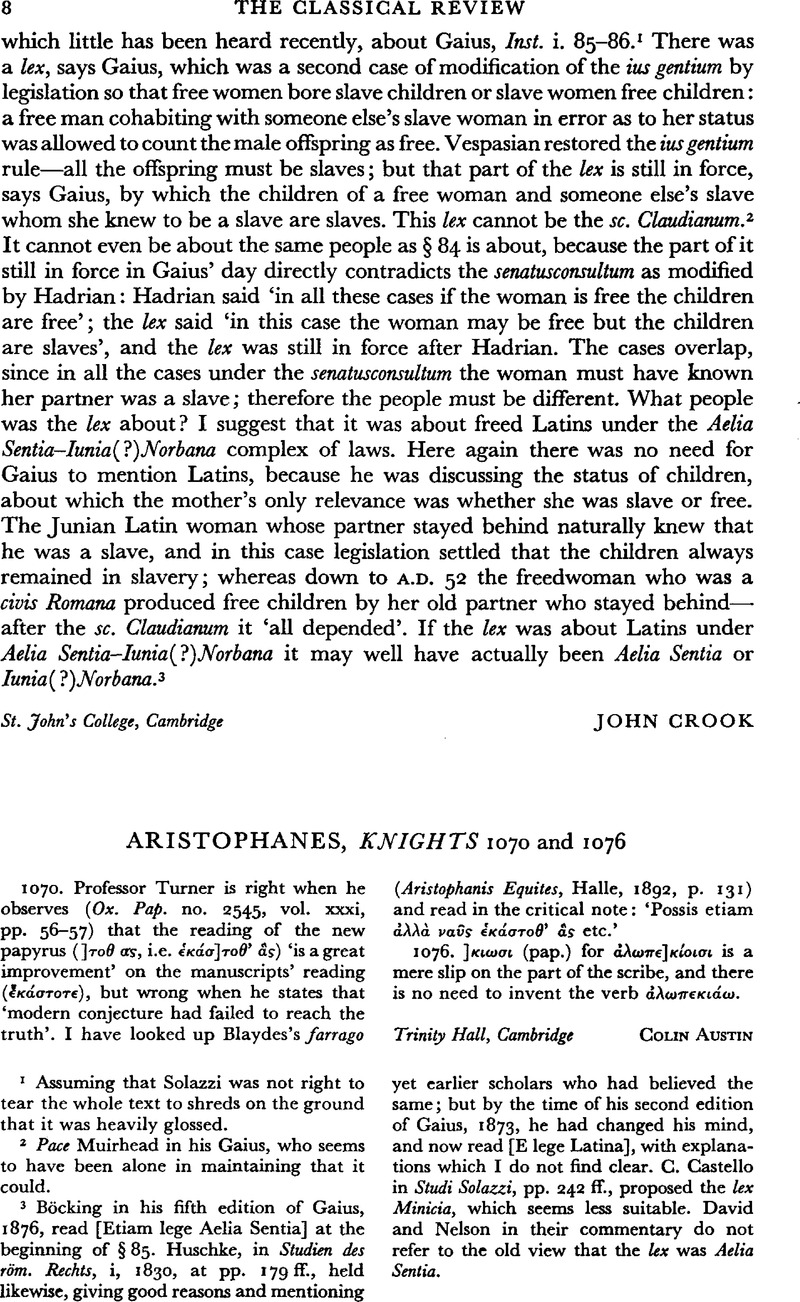No CrossRef data available.
Article contents
Aristophanes, Knights 1070 and 1076
Published online by Cambridge University Press: 27 February 2009
Abstract

- Type
- Review Article
- Information
- Copyright
- Copyright © The Classical Association 1967
References
1 Assuming that Solazzi was not right to tear the whole text to shreds on the ground that it was heavily glossed.
2 Pace Muirhead in his Gaius, who seems to have been alone in maintaining that it could.
3 Böcking in his fifth edition of Gaius, 1876, read [Etiam lege Aelia Sentia] at the beginning of § 85. Huschke, , in Studien des röm. Rechts, i, 1830, at pp. 179 ff.Google Scholar, held likewise, giving good reasons and mentioning yet earlier scholars who had believed the same; but by the time of his second edition of Gaius, 1873, he had changed his mind, and now read [E lege Latina], with explanations which I do not find clear. Castello, C. in Studi Solazzi, pp. 242 ff.Google Scholar, proposed the lex Minicia, which seems less suitable. David and Nelson in their commentary do not refer to the old view that the lex was Aelia Sentia.




